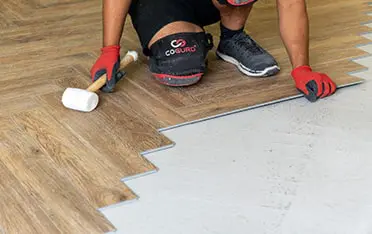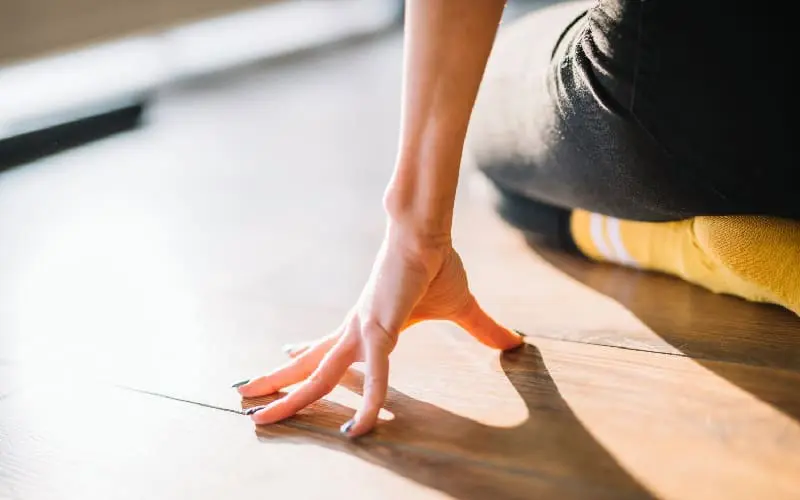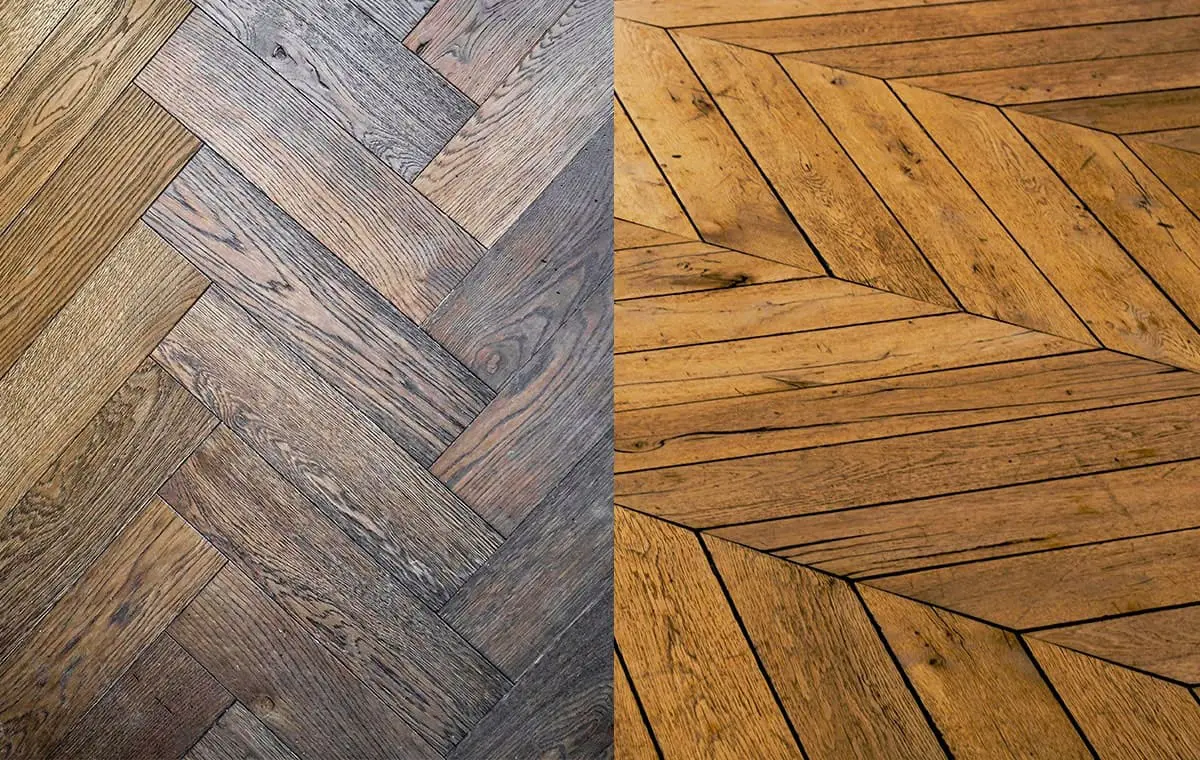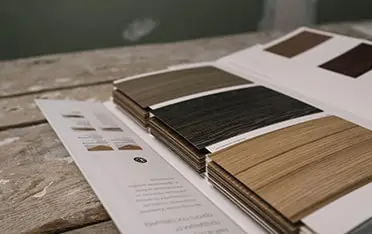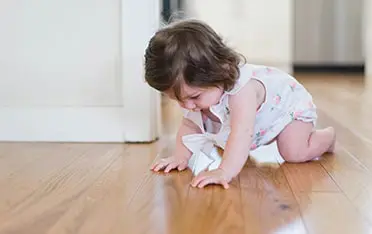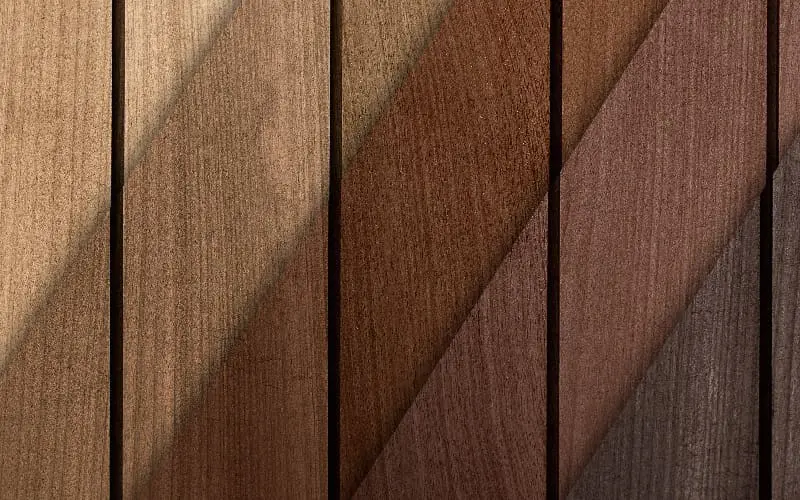Vinyl flooring is a stylish, cost-effective, and durable option for your home. With its excellent resistance to moisture and minimal maintenance needs, vinyl is a smart choice for kitchens, hallways, and other high-traffic areas. Luxury vinyl flooring (LVT) is more popular because of its quality, eco-friendliness, and beauty. Generally, the steps for installing luxury vinyl flooring and vinyl flooring are not much different. This guide Will Teach you how to install vinyl flooring.
Let’s review the steps involved and learn about expert and professional tips for maintaining vinyl flooring.
Installation Method
You can install Luxury vinyl flooring in two ways: glue-down, which uses special adhesives to bond the vinyl pieces to the subfloor, or floating (click-lock), which is installed over a subfloor, underlayment, or existing floor. While the glue-down method offers more protection for high-traffic floors, the floating method is more common in residential spaces as it is DIY friendly. It’s also adhesive-free and easy to replace. The best installation method depends on your subfloor condition, room usage, and personal preference.
Before you begin
After choosing the best installation method, remove everything from the floor. This includes furniture, appliances, and even door frame modifications if needed. All of these can be reinstalled after the flooring has been installed. Remove any baseboards before repair work is done to make the installation more manageable.
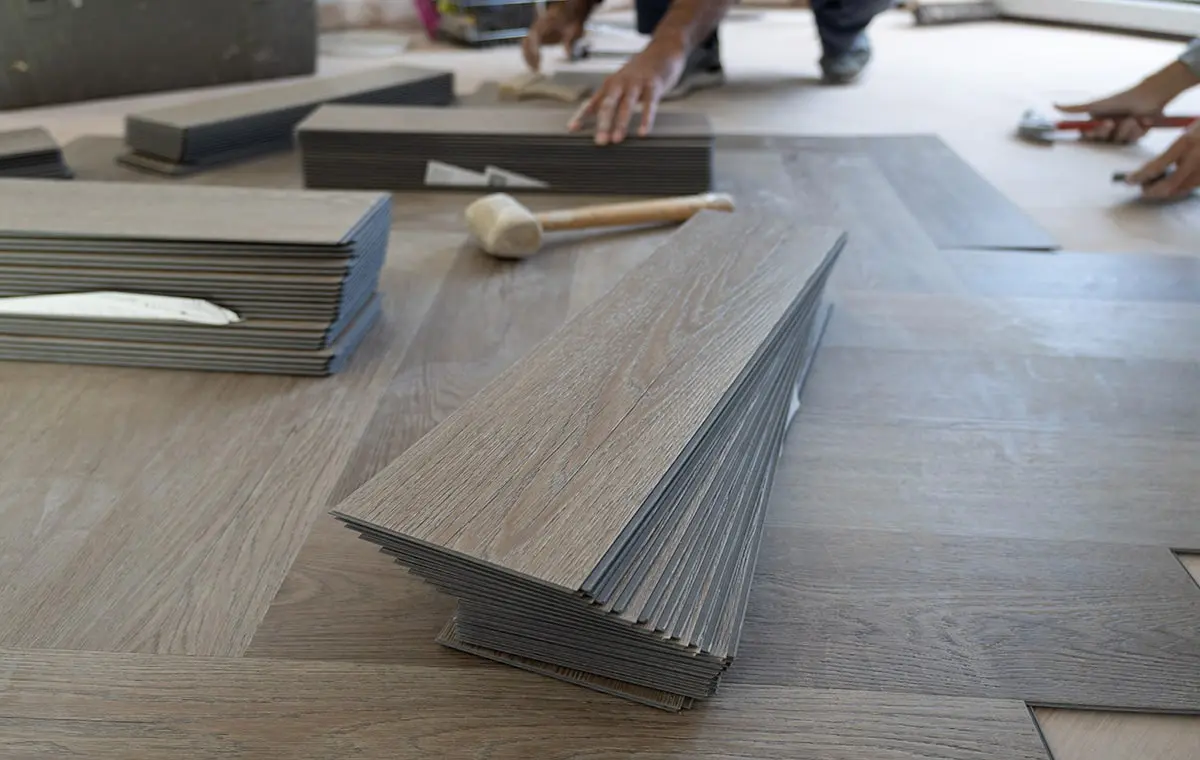
Prepare the Subfloor
Ensure your subfloor is clean (either by sweeping or mopping) before installing vinyl planks. Fix any surface irregularities. If the subfloor has cracks or bumps, use a levelling or patching compound to create an even surface. The subfloor must be smooth, clean, and dry. That will help ensure that the vinyl floor is perfectly level. You can sand or plane down any high spots for timber floors. For installation over concrete subfloors, ensure the humidity level is within an acceptable range (usually below 75%). Also, make sure all the planks are tight and free of creaks for wooden subfloors.
Remember, you shouldn’t install flooring on top of the carpet, existing vinyl flooring with cushion backs, or even hardwood flooring. Doing so can ruin your existing floors, subfloor, and the vinyl planks you’re installing.
Checking the planks
It is essential to check each board for defects and then contact the supplier if found! If you install defective boards without checking beforehand, you may have to spend extra money replacing them.
Measure your room
Measure your square footage and decide on the layout of your planks. Accurately measure the length and width of the room in metres, then multiply the two to get the area (e.g., 4m x 3m = 12m²). Check how much coverage each pack of vinyl provides — for example, if one pack covers 2.5m², divide your total by this number. Always add 10% extra for trimming and mistakes. It’s better to lay your planks perpendicular to the window in regular rooms and have the hallway planks parallel to the wall.
Prepare your tools
Listing and preparing the tools you need before you begin will help you focus better during the installation. Using the right tools will ultimately save you time, effort, and money.
Appropriate safety gear—gloves, safety glasses, a dust mask, and knee pads—is essential for a safe and comfortable DIY experience.
Essential tools and materials include:
- Measuring tape
- Pencil
- ruler or straight-edge
- Utility knife
- Rubber mallet
- Spacers
- Tapping block
- Pull bar
- Safety gear (gloves, safety glasses, ear protection, dust mask, knee pads)
- Broom or vacuum
- Chalk line
- Jigsaw or multi-tool (for complex cuts)
- Roller (for glue-down installation)
- Floor primer (if required)
- Levelling compound
- Patching compound
- Spirit level
- Moisture meter
- Notched trowel and adhesive (for glue-down method)
- Extension pole (for reaching under units or awkward spots)
- Sandpaper (for smoothing subfloor imperfections)
Having everything at arm’s reach before you begin will help you maintain momentum and achieve a more professional result.
Installing Vinyl Planks – Step-by-Step
Now it’s time to install your vinyl flooring. While installation processes may vary by brand, most luxury vinyl plank (LVT) installations follow the same general principles— using a floating method or a glue-down technique.

First Row
Start from the left-hand corner of the room with the tongue side of the plank facing the wall. Place spacers to maintain a consistent expansion gap—typically 10–15mm—between the flooring and the wall. A straight and accurate first row is critical—it guides the rest of the flooring. Once the first row is laid, double-check for gaps and alignment, and make any minor adjustments as needed.
For glue-down installations, spread adhesive with a notched trowel in small sections and press each plank firmly into place. Use a roller to eliminate any air pockets and ensure complete contact with the subfloor.
Continuing the Installation
To connect the second plank, insert its tongue into the groove of the first plank at a slight angle and press down until it clicks. Continue across the row this way. Make sure to stagger the plank joints—cut the first plank of every other row so that the end joints don’t line up. This improves both the strength and visual appeal of the floor. Keep the groove side facing you throughout the process. If you notice uneven height or misalignment, disassemble and re-lay the row—continuing on an uneven base can permanently damage the joints.
For glue-down vinyl, continue spreading adhesive section by section, laying each plank carefully before the glue sets. Always follow the curing time recommended by the manufacturer.
Installing Around Obstacles
Avoid pre-drilling holes for sections with obstacles like pipes, radiators, or other obstacles. First, lay the plank in a position to see exactly where the cut is needed. Once you know where the pipe aligns, drill a hole about 12mm (½ inches) larger than the pipe diameter. This gives enough space for expansion and easier fitting.
Last row
In the last row, it is essential to note that to maintain the floor’s integrity, the final board in each row should not be less than 12 inches so that the boards are securely locked and do not shift over time.
Final Touches
Once the installation is complete, roll the floor with a heavy roller to apply even pressure. Although this is important with the adhesive method, it can also be helpful with a floating floor, reducing the risk of edge lifting.
Finally, remove the spacers and reinstall the skirting boards.
Read More: How to install laminate flooring
Tips for a Flawless Installation
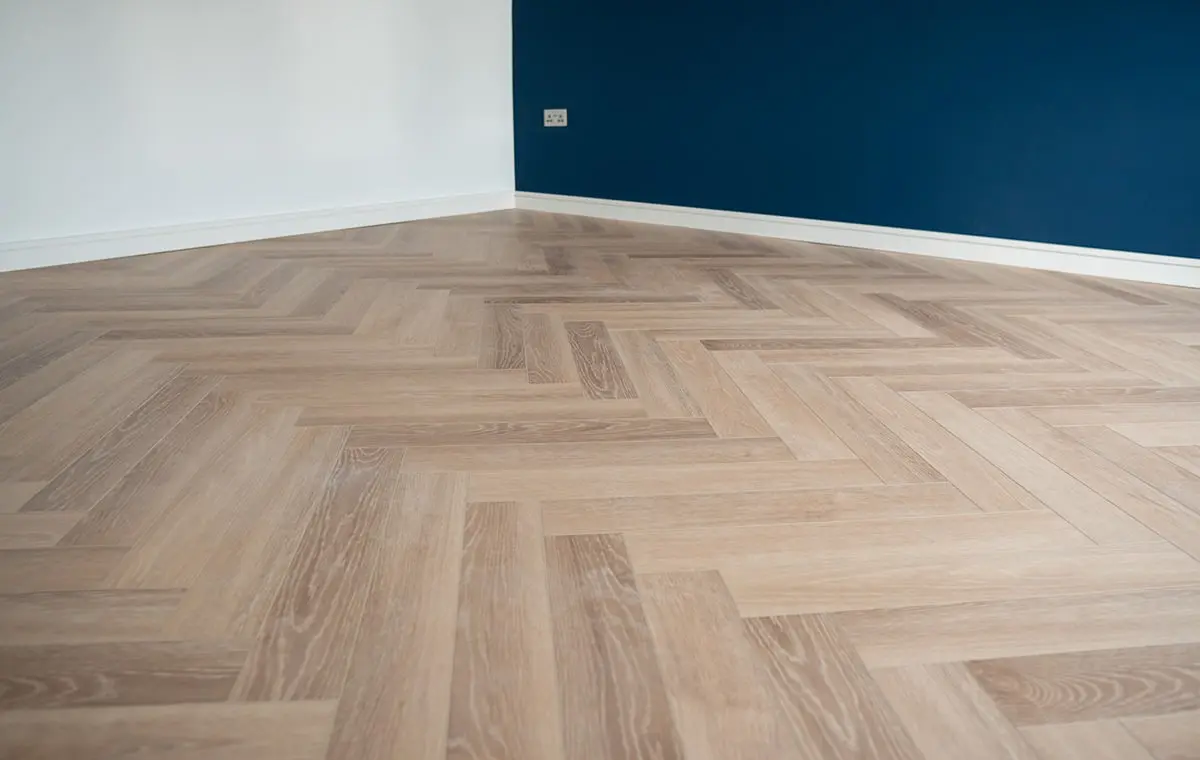
Following a few practical tips will help you have a more professional installation:
- Nail mouldings to the wall, not the floor—this prevents damage to the planks and avoids future buckling
- For the glue-down method, once the surface is smooth and clean, apply a thinned water-based floor primer. This will improve the adhesion of the vinyl planks and prevent them from lifting. Allow the primer to dry for at least 24 hours before proceeding to the next step.
- Even if you are confident with DIY installation, consider the manufacturer’s instructions.
- Always buy an extra box more than the number of planks you need
- For obstacles, a jigsaw or coping saw will offer more precision.
- Laying the planks parallel to the longest wall reduces the amount of cutting and visually creates a wider room.
- After installing the flooring using the adhesive method, avoid placing heavy furniture on the new floor for at least 24 hours.
- If you need to remove the planks during installation, lift them gently at an angle. If you feel the slip is stuck, lift the planks slightly as you remove them to make the process easier.
- It is best to acclimate your vinyl flooring by placing it in the installation room for at least 48 hours. This will allow it to adjust to the room’s temperature and humidity and reduce the risk of expansion or contraction after installation.
Vinyl Flooring Maintenance
Vinyl flooring is easy to maintain. A weekly cleaning is often sufficient, but consider vacuuming every other day or every few days. This will help keep your vinyl flooring in excellent condition. Here are some common mistakes to avoid for better maintenance
- Avoid bleach and wax, as they can damage the integrity of vinyl flooring. Also, never overwet the flooring; use a damp mop instead.
- While rugs can help protect your vinyl flooring and provide better sound insulation, avoid using rugs with latex or rubber backings, as these types of rugs will discolour the vinyl over time.
- While vinyl is durable and can withstand wear and tear, you can’t drag heavy objects across it. It’s better to add felt pads to the legs of the furniture. It is also best to use soft house slippers instead of shoes at home, and always keep your pet’s nails short.
Ready to transform your space? Use this guide and visit our website to shop for the best vinyl flooring.
For any flooring queries, drop us an email at info@flooringsurgeons.co.uk, or visit our showrooms located in Birmingham & Wolverhampton!
Halesowen
214A Dudley Road. Halesowen, Birmingham, B63 3NJ
0121 274 8575
Monday – Friday: 9 AM – 6 PM | Weekends: 10 AM – 4 PM
Wolverhampton
317 Penn Rd, Wolverhampton, West Midlands, WV4 5QF
01902 836666
Monday – Friday: 9 AM – 6 PM | Sat: 10 AM – 4 PM | Sun: Closed
info@flooringsurgeons.co.uk
fitting@flooringsurgeons.co.uk
customerservices@flooringsurgeons.co.uk



